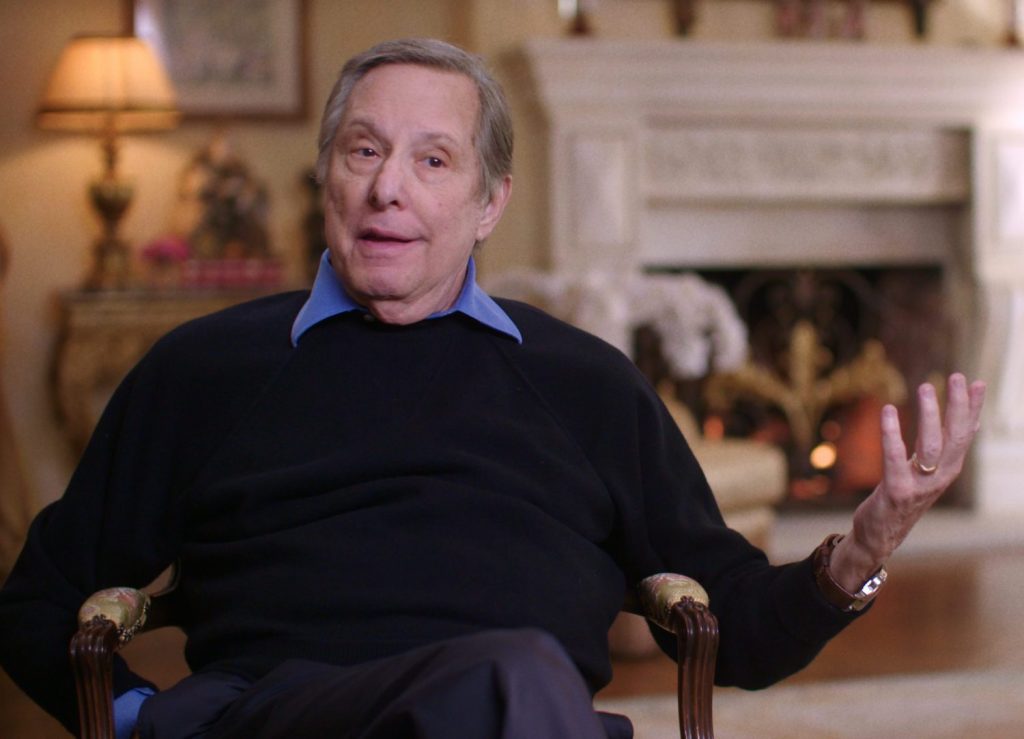A year or two later, at age 14, I snuck into an afternoon showing of director William Friedkin’s Oscar-winning film version at the Jerry Lewis Twin Theater in Doraville, Georgia. The movie had been out forever, and it seemed as if everyone had seen it but me. In those days, movie theaters went pitch black dark and the Jerry Lewis Theater (which quickly went bankrupt) was an empty, lonely place. All of which made a movie like The Exorcist extra scary. When Linda Blair began jabbing herself with the crucifix, I was outta there.
Most everyone has an Exorcist story. In Swiss filmmaker Alexandre O. Phillipe’s engrossing documentary, Leap of Faith, Friedkin tells his Exorcist stories, with an emphasis on his own filmmaking skills (undeniable) and the film’s philosophical gravitas (debatable). Phillipe, who made the brilliant Psycho shower scene doc, conducted only one interview for this film: with Friedkin. Those hoping for fresh intel from Ellen Burstyn or Linda Blair will have to wait for the inevitable 50th anniversary hoopla in 2023.

William Friedkin (Shudder)
Exorcist obsessives, and they are legion, will have heard most of Friedkin’s stories, but they’re sure to relish Phillipe’s gift for artfully juxtaposing those stories with shots from the film, as when Friedkin reveals the completely random source for the film’s unsettling first sound. Or the way Friedkin himself can’t explain why the opening image of a blazing sun begins in black-and-white only to slowly bleed into color. He credits instinct, and the sense, as first stated to him by the great German filmmaker Fritz Lang (Metropolis) that on certain films, “every decision was right”.
There is a new revelation about Blatty’s desire to act in the film, and what he was willing to give up to do so, as well as fascinating stories of Friedkin’s last-minute decision to have playwright Jason Miller play the young priest, Father Karras. The death of Karras in the film’s final scene is revealed as an ongoing puzzlement for its director, who thought it a dramatic muddle but gave in to Blatty’s passionate insistence. Friedkin, who gives in to no one, ever, let the novelist have his way. Not a common occurrence in Hollywood.
The painful (for Friedkin) Bernard Hermann story is here, as well as a newly detailed description of actress Mercedes McCambridge’s infamous raw eggs and whiskey work process for giving voice to the film’s demon. The filmmaker is still pleased with himself for having thought to call upon the half-forgotten 1940s and ‘50s scene-stealer but Phillipe neglects to ask Friedkin why he denied McCambridge an on-screen credit in the film’s original cut, a slight that upset her terribly. (She was credited in subsequent prints.)
Friedkin, who’s 85 now, has talked about his most famous film so often and for so long that fresh emotion is hard to muster, but when he speaks of his love for fine art, his eyes warm with emotion. The iconic shot of von Sydow’s Father Merrin standing motionless with his black satchel outside the Georgetown townhouse where he’s just arrived to perform an exorcism was inspired by René Magritte’s Empire of Light paintings. Phillipe places the painting alongside the film scene and zooms in as Friedkin breaks down how a subtle shift of light source from one medium to the other made film history.
Funny thing though: Friedkin’s stories of the great painters inspiring his use of light in The Exorcist (and all his movies) may actually be more affecting than any single moment in the film, including the death of poor Father Karras. It’s an indelible, classic film but we rarely weep for its characters. And yet, all these years later, it’s imagery can still reduce me to an unnerved 14-year-old looking for the nearest exit. For Friedkin and company, another half century of movie immortality seems assured.



